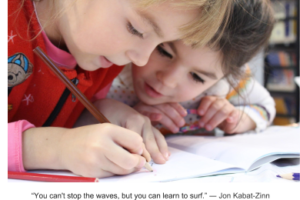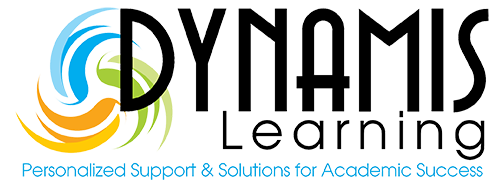Imagine walking into your child’s school and hearing – well, nothing. As you go down the halls, you hear the faint echo of a bell. When you peek into the room where your child is, you see all of the children sitting, feet flat on the floor, hands in their laps, with their eyes closed. At the front of the classroom, the teacher has turned off the lights and is holding a meditation bowl in an open palm. The teacher strikes the bowl with a small mallet, the sound from the bowl reverberates peacefully throughout the room.
No, this isn’t some new type of hypnotic discipline or that the teacher’s instruction style was so boring that it put the entire class to sleep. This is what mindfulness meditation in the classroom looks like, and it may come to your child’s classroom very soon.
What is mindfulness?
The practice of mindfulness is found in cultures and religions throughout the world. Based on ancient religious practices – mindfulness, meditation, and awareness, terms used interchangeably, evolved into religions over the last century. However, it was Jon Kabat-Zinn, Professor of Medicine Emeritus and creator of the Stress Reduction Clinic and the Center for Mindfulness at the University of Massachusetts that introduced the term and practice of mindfulness into medicine and mainstream society. Kabat-Zinn’s definition of mindfulness is “the awareness that arises, through paying attention, on  purpose, in the present moment, non-judgmentally.”
purpose, in the present moment, non-judgmentally.”
Zabat-Zinn believes that by incorporating deliberate awareness in our lives, we can make better decisions and improve our quality of life. In the classroom, the extension of mindfulness allows students an opportunity to gain control over themselves and empowers control over themselves and empowers them to think through their choices.
There are some opponents to mindfulness as a practice in public schools. One argument is that it introduces religion into the schools. There is also push back from the meditation community, where practitioners feel that by using meditation in a very basic way, it strips away the profound levels of the practice established centuries ago. Despite the opposition, schools that have used mindfulness have experienced significant progress with their students.
How mindfulness in the classroom helps children
According to Mindful Education, an association comprised of individuals and organizations that are dedicated to supporting mindfulness training as an integral part of K-12 education, there are numerous benefits for students when mindfulness meditation is practiced in the classroom.
Among the most evident are:
Decreased ADHD behaviors- specifically hyperactivity and impulsivity
Decreased negative affect/emotions
Fewer conduct and anger management problems
Increased student working memory, planning and organization
Increased student self esteem
The short film, “Room to Breath”, produced by Mindful Schools, documents the transformations of students in a challenging San Francisco public middle school before and after mindfulness meditation was used in the classroom. At the end of the movie (54:39), results of a survey conducted with the participating students revealed that:
80% found themselves calming down more easily when they were upset
58% were more focused in class
40% used mindfulness to avoid a fight or altercation
34% claimed that it increased their grades
Students that practice mindful meditation see marked improvements in academics and behavior. It is a tool that they are able to take and use at anytime, and at any point in their lives.
How mindfulness helps teachers
A student cannot be successful if the teacher is not able to guide, coach, and instruct them along the correct path. When teachers embrace mindfulness practices, it elevates the level of attentiveness, productivity and control in their own lives both inside and outside of the classroom. Teachers are able to:
Build community with parents, students and school administration.
Fortify teacher-student relationships.
Lay foundation for positive learning environment.
Manage challenging students and situations.
Improve effective communication with students, parents and administration.
Mindfulness is not just another trial and error approach to controlling classrooms and students. This practice provides a foundation of life skills that the children will use every day of their lives. Mindfulness does not mean that they will not encounter the unexpected circumstances of life or that they will be perpetually happy. Mindfulness empowers students to have agency over their bodies and minds – and with this, they can handle any situation that comes.
